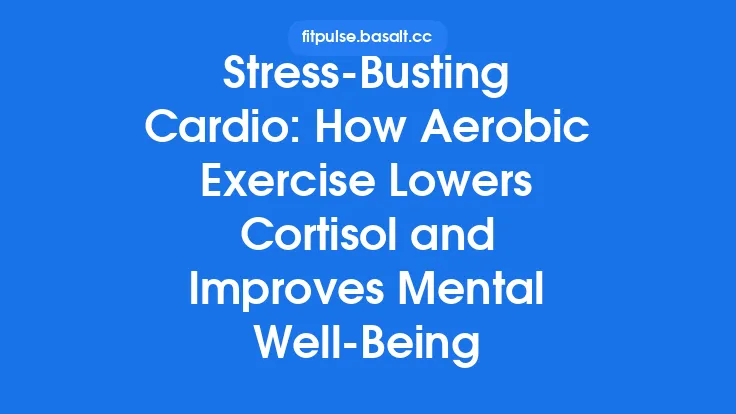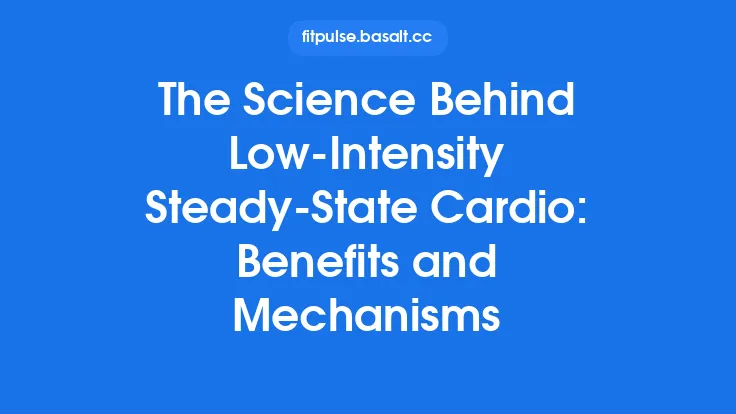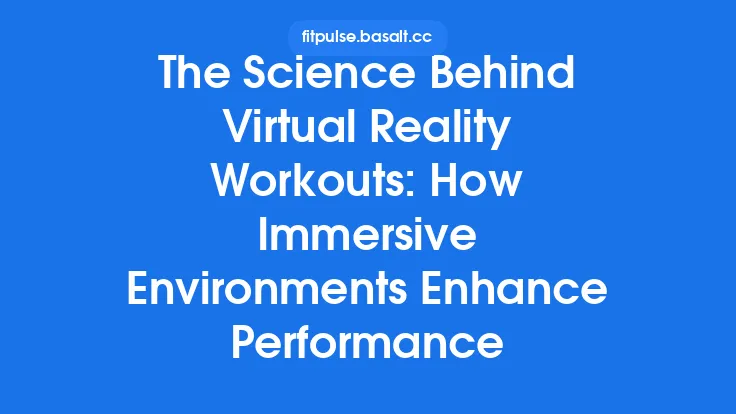Regular aerobic activity is one of the most powerful, evidence‑based tools we have for protecting the heart. While many people associate cardio with weight loss or stress relief, its primary and most enduring benefit lies in the way it remodels the cardiovascular system at every level—from the tiniest endothelial cell lining the arteries to the whole‑body capacity of the heart to pump blood efficiently. Understanding the science behind these adaptations helps explain why a consistent cardio habit can slash the risk of heart disease, heart attack, and premature death, and it provides a clear roadmap for designing a program that maximizes heart‑protective effects.
Physiological Foundations of Aerobic Exercise
Aerobic (or “cardio”) exercise is defined by sustained, rhythmic muscle activity that elevates heart rate and oxygen consumption (VO₂) for an extended period—typically 10 minutes or more. The hallmark of this activity is a steady increase in cardiac output (the product of heart rate and stroke volume) to meet the heightened metabolic demands of working muscles. This systemic challenge triggers a cascade of acute responses:
| Acute Response | Primary Effect on the Cardiovascular System |
|---|---|
| ↑ Heart Rate (HR) | Increases blood flow to active tissues |
| ↑ Stroke Volume (SV) | Enhances the amount of blood ejected per beat |
| ↑ Cardiac Output (CO) | Boosts overall circulatory capacity |
| ↑ Blood Pressure (during activity) | Improves arterial wall stretch and shear stress |
| ↑ Respiratory Rate & Tidal Volume | Elevates oxygen uptake and carbon dioxide removal |
| ↑ Sympathetic Nervous System activity | Mobilizes energy substrates and supports perfusion |
These short‑term changes are the stimulus for long‑term adaptations that collectively lower cardiovascular risk.
Molecular Mechanisms Linking Cardio to Vascular Health
Shear Stress and Endothelial Function
When blood flows faster during exercise, the laminar shear stress exerted on the endothelial lining of arteries rises dramatically. Endothelial cells sense this mechanical force through mechanoreceptors (e.g., PECAM‑1, VE‑cadherin) and respond by:
- Upregulating nitric oxide synthase (eNOS) → more nitric oxide (NO) production, which dilates vessels, inhibits platelet aggregation, and reduces smooth‑muscle proliferation.
- Suppressing inflammatory adhesion molecules (VCAM‑1, ICAM‑1) → fewer leukocytes adhere to the vessel wall, limiting atherogenic inflammation.
- Activating antioxidant pathways (Nrf2) → neutralizes reactive oxygen species (ROS) generated during increased metabolism.
The net result is a more compliant, less atherogenic arterial environment.
Lipid Metabolism and Plaque Stabilization
Regular aerobic training improves the lipid profile beyond simple reductions in body fat:
- Increases high‑density lipoprotein (HDL) cholesterol → HDL promotes reverse cholesterol transport, pulling cholesterol out of arterial plaques.
- Decreases triglycerides → lower circulating triglyceride‑rich lipoproteins reduce the substrate for plaque formation.
- Modifies low‑density lipoprotein (LDL) particle size → a shift toward larger, buoyant LDL particles, which are less prone to oxidation and arterial infiltration.
Moreover, exercise stimulates matrix metalloproteinase (MMP) regulation within plaques, fostering a more stable fibrous cap and reducing the likelihood of rupture—a primary trigger for myocardial infarction.
Mitochondrial Biogenesis and Oxidative Capacity
Aerobic training activates the AMP‑activated protein kinase (AMPK)–PGC‑1α pathway, driving the creation of new mitochondria in both skeletal muscle and cardiac myocytes. Enhanced mitochondrial density yields:
- Greater oxidative phosphorylation efficiency → lower reliance on anaerobic glycolysis, reducing lactate accumulation and metabolic stress.
- Improved fatty‑acid oxidation → the heart uses a more stable energy source, decreasing oxidative damage.
- Reduced ROS production per unit of ATP → less oxidative injury to vascular cells.
Impact on Cardiac Structure and Functional Capacity
Eccentric Hypertrophy vs. Pathological Hypertrophy
The heart adapts to the volume overload imposed by aerobic exercise by undergoing eccentric hypertrophy—an increase in chamber size with proportional wall thickness. This remodeling enhances stroke volume without raising wall stress, contrasting sharply with the concentric hypertrophy seen in hypertension or aortic stenosis, which predisposes to heart failure.
Improved Diastolic Function
Aerobic conditioning augments early diastolic filling (E‑wave) and reduces left‑ventricular filling pressures. Enhanced relaxation improves coronary perfusion during diastole, a critical factor in preventing ischemia, especially in older adults.
VO₂ Max Elevation
VO₂ max, the maximal oxygen uptake, is the gold standard for cardiorespiratory fitness. Regular cardio training can raise VO₂ max by 10–30 %, reflecting:
- Higher cardiac output at peak exercise.
- Greater arteriovenous oxygen difference due to improved muscle capillarization and mitochondrial density.
Higher VO₂ max is independently associated with lower all‑cause and cardiovascular mortality.
Autonomic Regulation and Arrhythmia Prevention
Aerobic exercise modulates the balance between sympathetic and parasympathetic tone:
- Increased vagal (parasympathetic) activity → lower resting heart rate and reduced heart‑rate variability (HRV) indices of risk.
- Reduced sympathetic overdrive → decreased catecholamine spikes that can precipitate ventricular ectopy.
Long‑term, these shifts lower the incidence of atrial fibrillation and ventricular arrhythmias, particularly in middle‑aged and older populations.
Epidemiological Evidence of Risk Reduction
Large cohort studies and meta‑analyses consistently demonstrate a dose‑response relationship between aerobic activity and cardiovascular outcomes:
| Study | Population | Average Weekly Exercise | Relative Risk Reduction for Coronary Heart Disease |
|---|---|---|---|
| Harvard Alumni Health Study (30 yr) | 17,000 men | 1–2 h moderate‑intensity | ~20 % |
| Copenhagen City Heart Study | 13,000 adults | ≥150 min moderate or 75 min vigorous | ~30 % |
| meta‑analysis (2019, 33 studies) | >1 million participants | 3–5 h/week moderate | 22 % lower cardiovascular mortality |
These data underscore that even modest, regular aerobic activity confers substantial protection, and benefits accrue with higher volumes up to a point of diminishing returns.
Exercise Prescription for Optimal Heart Health
While individual needs vary, evidence‑based guidelines for cardiovascular protection converge on the following parameters:
| Variable | Recommended Range | Rationale |
|---|---|---|
| Frequency | 3–5 days per week | Allows sufficient stimulus while providing recovery for cardiac remodeling |
| Intensity | 40–70 % of VO₂ reserve (moderate) or 70–85 % (vigorous) | Moderate intensity improves endothelial function; vigorous intensity yields greater VO₂ max gains |
| Duration | 30–60 minutes per session (continuous) | Sustained shear stress needed for endothelial adaptations |
| Mode | Large‑muscle‑group activities (running, cycling, swimming, rowing) | Maximizes cardiac output and systemic oxygen demand |
| Progression | Increase volume by ≤10 % per week | Prevents overtraining and maintains steady physiological stimulus |
Heart‑Rate Reserve (HRR) Method is a practical way to gauge intensity:
\[
\text{Target HR} = \text{HR}{\text{rest}} + \% \times (\text{HR}{\text{max}} - \text{HR}_{\text{rest}})
\]
where HRₘₐₓ can be estimated as 220 − age (or measured via maximal exercise testing for precision).
Monitoring Progress and Adjusting Variables
- Baseline Assessment – Obtain resting HR, blood pressure, lipid panel, and a submaximal VO₂ max test (e.g., 3‑minute step test) to establish a starting point.
- Periodic Re‑evaluation – Every 8–12 weeks, repeat VO₂ max estimation and lipid measurements. Expect a 5–10 % VO₂ max increase in the first 3 months, followed by slower gains.
- Heart‑Rate Variability (HRV) – Tracking HRV trends can signal autonomic improvements or early signs of overreaching.
- Training Log – Document duration, intensity (via perceived exertion or HR), and subjective recovery. Adjust weekly volume if fatigue accumulates.
Common Misconceptions and Safety Considerations
- “Only high‑intensity workouts protect the heart.”
Moderate‑intensity activity yields robust endothelial benefits with lower injury risk. Both intensities are valuable; the key is consistency.
- “If I’m already fit, I don’t need cardio.”
Even elite athletes experience continued endothelial and lipid improvements with structured aerobic sessions.
- “Cardio is dangerous for people with heart disease.”
Supervised, physician‑approved aerobic programs are safe and often prescribed post‑myocardial infarction to improve survival. Screening (e.g., stress test) is essential for high‑risk individuals.
- “Heart rate should stay constant during a workout.”
A progressive increase in HR as the session proceeds is normal; the goal is to stay within the target HR zone, not to maintain a single value.
Future Directions in Cardio Research
Emerging technologies and scientific inquiries promise to refine our understanding of cardio’s heart‑protective mechanisms:
- Wearable Hemodynamics – Continuous monitoring of stroke volume and cardiac output via cuff‑less sensors could personalize intensity prescriptions.
- Genomic Profiling – Identifying polymorphisms (e.g., in the eNOS gene) that modulate individual response to shear stress may guide tailored exercise programs.
- Microbiome Interactions – Preliminary data suggest aerobic training alters gut flora, influencing systemic inflammation and atherosclerosis.
- Artificial Intelligence (AI) Modeling – AI can integrate multi‑modal data (HRV, VO₂ max, lipid panels) to predict individual cardiovascular risk trajectories under different training regimens.
These advances will likely shift cardio recommendations from population‑based averages to precision exercise medicine, maximizing heart health for each person.
In sum, the science behind aerobic exercise reveals a multi‑layered protective network: mechanical forces improve endothelial health; metabolic shifts refine lipid profiles; mitochondrial upgrades boost cardiac efficiency; and autonomic balance curtails arrhythmic risk. By adhering to evidence‑based frequency, intensity, and duration guidelines, individuals can harness these mechanisms to dramatically lower their cardiovascular risk and enjoy a longer, healthier life.





